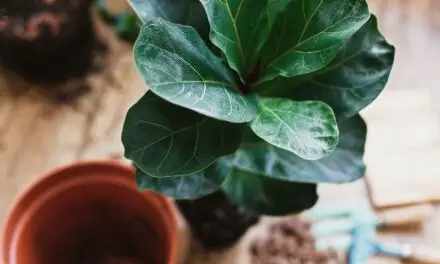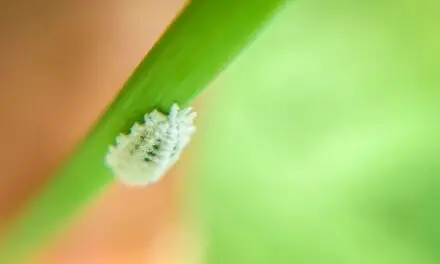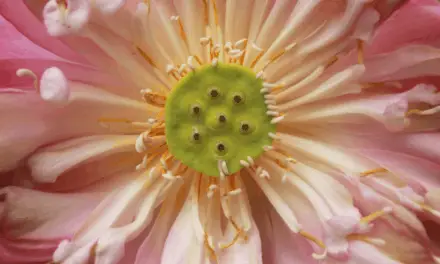The bird of paradise is a large tropical plant with long stems and massive fan-shaped leaves.
These plants love sunlight and are easy enough to look after, as long as you can provide them enough space and water them correctly.
But, the giant leaves on this plant are prone to splitting and that leads many people to believe that they are not caring for their plant properly.
Table of Contents
Why Is My Bird Of Paradise Leaves Splitting?

The leaves splitting on your bird of paradise is a natural occurrence. The leaves on this plant are so big and broad that in nature, they need to be able to rip easily so that the wind doesn’t catch a hold of them and uproot the plant or break its stems.
Although leaves splitting on your bird of paradise is normal, a lack of humidity and sunlight can add to the problem and cause the leaves to split more frequently.
Leaf splitting often occurs as new leaves on the plant are unfurling.
If your bird of paradise is too dry and not getting enough light, the process of unfurling will not run as smoothly as it could and this can cause the leaf sections to open at different times resulting in tearing.
What To Do If Your Bird of Paradise Leaves Are Splitting?
If the leaves are splitting excessively, then your plant may not be getting enough moisture or bright sunlight.
Check The Soil For Dryness
Test the top two or three inches of soil with your finger and if it doesn’t feel moist at the bottom, your bird of paradise is too dry and needs watering.
It’s okay for the top two inches of soil to dry out a bit but if the soil feels dry below a depth of two or three inches, then it’s too dry.
And that dryness can contribute to leaf splitting.
Also, keep in mind that your bird of paradise is more at risk of drying out during the spring and summer months.
Related Article: Why Is My Bird Of Paradise Drooping? (And What To Do)
Water Your Bird Of Paradise
If the soil feels dry then give it a good soaking so that lots of water drains down through the roots.
Make sure excess water is allowed to drain away from the pot afterward so that it’s not left waterlogged.
Once watered, don’t water it again until the top couple of inches of soil has dried again.
Generally, you should be watering your plant once every 7 to 14 days.
But it may need even more water if it is very big or if it’s receiving lots of heat and sunlight.
Raise Humidity Levels For Your Bird Of Paradise
Low levels of humidity will also dry out the leaves of your plant and cause them to tear more easily.
There are a number of ways in which you can raise humidity levels for your bird of paradise.
You can group it close together with other plants or mist it very regularly.
But probably the best and easiest way is to just buy a humidifier and keep it nearby.
Make Sure Your Bird Of Paradise Is Getting Enough Sunlight
These plants need lots of bright light and insufficient sunlight is the biggest reason they hardly ever bloom indoors.
Inadequate light can contribute to stems becoming weakened and leaves splitting.
You can move your plant outside or to a spot that gets a minimum of six hours of sun each day, including a few hours of the morning sun.
Keep in mind that if you move your plant outdoors and it is windy, it may further contribute leaf splitting problem.
If the midday sun gets too intense move your bird of paradise to a spot where it will get plenty of bright but indirect sunlight.
Will My Bird Of Paradise Leaves Heal?
Unfortunately, your bird of paradise cannot repair its torn leaf surfaces.
However, it can carry out a process called continuous embryogeny.
This allows the plant to reproduce its fundamental parts like stems, leaves and branches, and roots.
Eventually, your plant will shed old leaves and grow new ones to replace them.
How To Prevent Your Bird Of Paradise Leaves Splitting?
To prevent your bird of paradise leaves from splitting make sure it doesn’t become dehydrated and ensure it’s in a spot where it receives lots of bright sunlight.
When just beneath the top two inches of soil feels dry, you can give the plant a good watering and then wait for the soil to dry out once again.
In general, you’ll want to place your bird of paradise where it will receive maximum sunlight.
Just don’t leave it in the full afternoon sun.
A couple of hours of morning sunlight is good for the plant but when it comes to very intense afternoon sun, it’s best to move it to where it will get lots of bright, indirect light.
Final Thoughts
Leaf splitting on your bird of paradise is totally normal and something the plant does both indoors and outdoors.
You can reduce the amount of splitting by ensuring your plant is hydrated and getting lots of sun but some amount of leaf splitting will always take place.
When you see these plants out in nature, they are continually splitting their leaves so that the wind can’t uproot them.
Leaf tearing is strictly an aesthetic issue and usually doesn’t affect the health of your plant.




